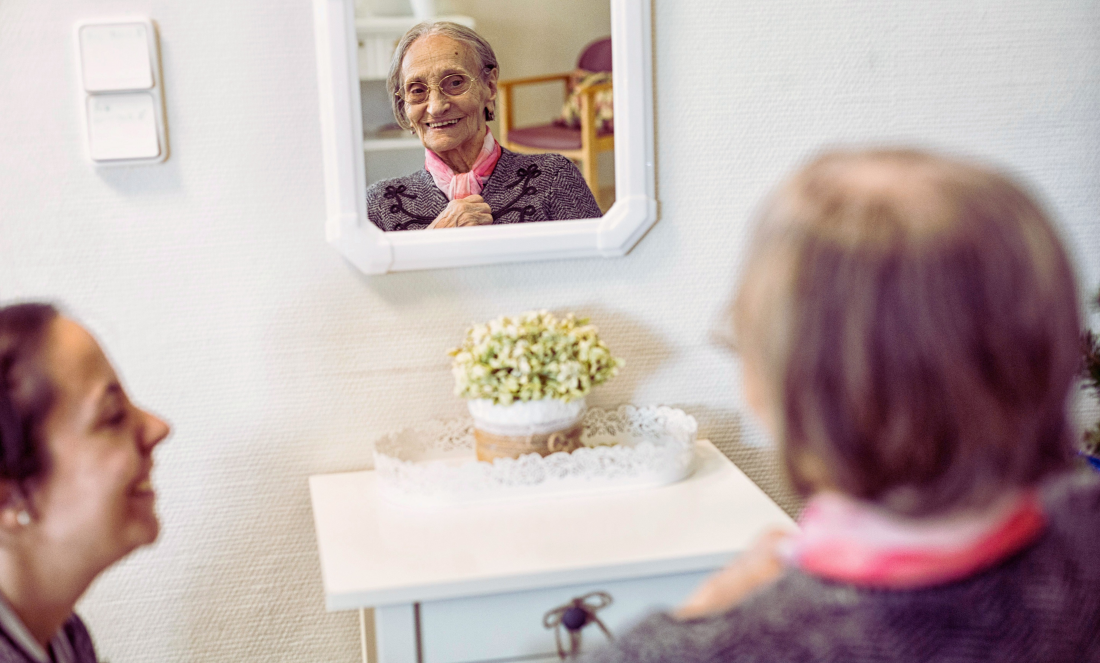
Biography as a key aspect in everyday communication and interaction with people with dementia
In recent years we are witnessing a change in the model of care that seeks to put people and their relationships at the centre of care activity. But what does it mean to put people and their relationships at the centre? There are many elements involved, but we will highlight at least two that are essential.
A first aspect has to do with knowing the person we are dealing with. People are not only biological entities, but fundamentally biographical beings. That is to say, the person goes beyond the functioning of his or her body and is characterised by having a history behind him or her that allows us to understand how he or she behaves in the present and how he or she is projected into the future.
Taking into account this biographical dimension of the person is necessary in order to personalise our way of caring for and treating each person. Because each person is different, we need to avoid standardised care based solely on labels, such as 'dementia', which homogenise and erase the uniqueness of each person, their life trajectory, their present preferences and needs, and their priorities and wishes for the future.
A second element has to do with the way we relate to the people we support, as this treatment, especially for people in great need of help, serves to uphold the dignity of the person. The key here is to be aware that all people, including those living with dementia, have a point of view on the world. Knowing that point of view, i.e. putting ourselves in their shoes, will help us to uphold the person's dignity and provide truly humane care.
In the case of people with dementia, who may have particular problems in expressing themselves, it means that we have to spend particular effort and time getting to know that point of view. But it is time and effort that is worthwhile if we are to provide quality help and care. Taking refuge in the label (the easy explanation: he behaves like that because he has dementia) hinders true communication, objectifies and makes the relationship rigid, when dementia is just one more element (sometimes not even the most important one) that explains the situation and the person's present reactions.
And how do these two elements translate into practice? That is, how do we need to change care and our professional performance to ensure that we offer personalised and truly humane support?
Firstly, we need to deepen our understanding of the life trajectory of people. In this respect, working with life stories is crucial. However, we must avoid the life story becoming a formalised list of unrelated events that we obtain on the first day in a quick interview with standardised questions. Events that are often provided exclusively by family members, which we write down on a form and file away, never to be consulted again.
The life history (or rather, life stories, because each person has multiple and changing narratives) must be a living element, allowing episodes to be added at each moment and when they are known, which is usually in everyday informal conversation. A life story that can be shared, in its non-confidential aspects, by those who provide care and support. A life history that does not refer exclusively to the past, but that can gather present concerns and future elements that will have implications for the care plan and the life projects of its protagonists.
Secondly, humanising treatment implies transforming the interactions and the communicative climate established between professionals and people receiving support, as well as enhancing communication between them, given that professionals are not always going to be present. This change means that communication is no longer exclusively imperative ('raise an arm', 'let me dress you') and centred on care, as the sum of tasks that the professional has to carry out as quickly as possible. Caring is much more than that. Caring means stepping down from our pedestal as 'experts' to treat the person in need of support as an equal and collaborative partner. It means including emotional and social relationship elements in caregiving. It means treating the person in need of support as an end in itself, rather than simply as a means to achieve goals that have to do with tasks to be completed.
In this transformation of communication and dealings, the promotion of seemingly banal, inconsequential, everyday conversation is very important. Those little anecdotes that we share on a daily basis, far from being a waste of time, are the ones that define a warm relationship, the ones that strengthen the bond between people. In the case of people with dementia, the support of professionals and the use of non-verbal elements will be essential for this daily interaction to continue, especially as the difficulties of expression and comprehension increase.
In short, it is a matter of taking an interest in how the person in front of us sees the world, so that the relationship remains truly human, and promotes the well-being of both professionals and people in need of support. In line with these questions, from the Pathways in PCC project we have worked on the development of materials, a route and a guide, which aim to guide both professionals and families in their daily interactions from the recognition and respect for the person, from a viewpoint linked to the biography, not to the illness.
We invite you to get to know and browse through these new resources that we will be presenting on 24 November and with which we hope to inspire you when designing your own person-centred care pathway.

Author

Add new comment